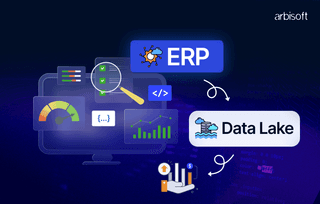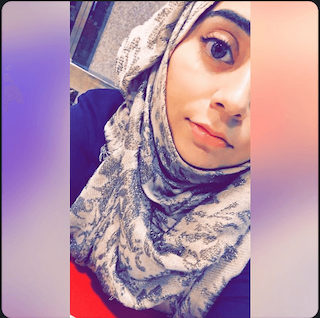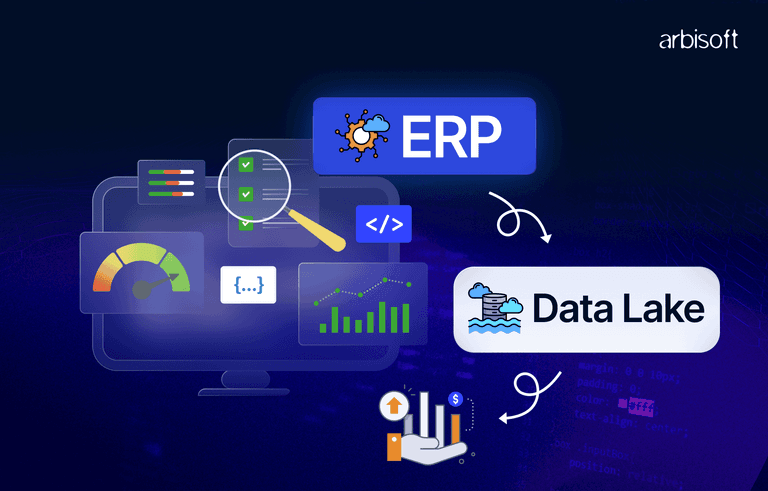We put excellence, value and quality above all - and it shows




A Technology Partnership That Goes Beyond Code

“Arbisoft has been my most trusted technology partner for now over 15 years. Arbisoft has very unique methods of recruiting and training, and the results demonstrate that. They have great teams, great positive attitudes and great communication.”
Automation Technology Trends for 2024 and Beyond

A McKinsey Global Institute report estimated that up to 50% of global activities could be automated by 2050, with the potential to raise productivity by up to a scarcely believable 90%!
The automation revolution is here, and it's not just about streamlining IT workflows. It's about fundamentally transforming how an entire organization operates. But beyond the buzzwords (AI and Robots!), what specific trends are shaping the future of automation?
This blog post dives deep, analyzing not just the "what" but also the "why" and "how" behind these trends.
A Broader Automation Landscape
The goal of automation isn't just to streamline IT processes. It involves transforming entire industries from the ground up. Here's a glimpse:
- Marketing Automation: Imagine AI-powered tools that personalize customer experiences in real-time, crafting targeted campaigns with laser focus and boosting conversion rates.
- Industrial Automation: Robots are no longer confined to factory cages. Collaborative robots (cobots) will seamlessly work alongside humans, performing hazardous or repetitive tasks, increasing productivity and safety.
- Healthcare Automation: From robotic surgery to AI-powered diagnostics, automation is poised to revolutionize healthcare delivery, improving accuracy, and efficiency, and potentially making preventative care more accessible.
Intelligent Automation - AI, RPA, and BPM
The true power of automation lies in its intelligence. We're witnessing the rise of Intelligent Automation (IA), a powerful synergy between Artificial Intelligence (AI), Robotic Process Automation (RPA), and Business Process Management (BPM).
Let’s talk about their basic automation difference briefly.
- AI analyzes vast amounts of data, identifies patterns, and makes intelligent decisions, automating complex tasks that were previously human-exclusive.
- RPA automates repetitive, rule-based tasks, freeing up the human workforce to focus on higher-value activities.
- BPM provides a framework for designing, optimizing, and managing business processes, ensuring seamless integration of AI and RPA solutions.
Top Trends to Watch
Now, let's delve into the specific trends that will define automation in the coming years. Buckle up!
1. Hyperautomation
Hyperautomation goes beyond just integrating various automation tools. It's about creating a unified ecosystem where AI, RPA, BPM, and other technologies work together seamlessly.
The global Robotic Process Automation (RPA) market size was valued at USD 8.5 billion in 2023 and is projected to reach USD 29.2 billion by 2030, at a CAGR of 19.4%.
This automation can help organizations to:
- Automate End-to-End Processes - Imagine automating an entire customer service interaction, from initial query routing to resolution, using a combination of AI chatbots, RPA for data retrieval, and BPM for workflow management. This translates to a significant reduction in processing time and improved customer satisfaction.
- Self-Learning and Self-Optimizing Systems - Advanced AI algorithms can analyze past automation performance data and identify areas for improvement. This allows the automation ecosystem to continuously learn and optimize itself, leading to increased efficiency over time.
2. The Rise of Citizen Developers
A 2023 study by Mendix3 found that 72% of businesses are leveraging low-code/no-code platforms to automate workflows, empowering citizen developers. Low-code/no-code platforms empower business users to create basic automation solutions without extensive coding knowledge. This democratization of automation allows businesses to:
- Reduce Reliance on IT - Citizen developers can automate departmental workflows without overburdening IT resources. This frees IT to focus on more complex automation projects.
- Faster Innovation - Business users closest to the problem can quickly build and test automation solutions, accelerating innovation cycles.
For teams looking to scale these solutions, a vibe-coded prototype to MVP development service can help transform early low-code builds into robust, production-ready applications.
3. Digital Twin Technology
Consider a virtual replica of a physical asset – a factory, a power plant, or even an entire city. This is the concept behind digital twins. A GE Digital report highlights that digital twins can generate up to 10% to 30% in efficiency gains through optimized operations and predictive maintenance.
By mirroring real-world processes in a virtual environment, businesses can:
- Optimize Processes - Simulate different scenarios in the digital twin to identify bottlenecks and optimize real-world processes for peak efficiency.
- Predictive Maintenance - Analyze data from the digital twin to predict maintenance needs and prevent equipment failures.
- Remote Monitoring and Control - Operators can monitor and even control real-world systems remotely through their digital twins, improving response times and decision-making.
4. Cloud Automation
Cloud automation is one of the hottest trends in IT, with 57% of companies already adopting cloud automation solutions, and 30% planning to do so in the next year. It streamlines complex cloud environments, especially in hybrid cloud setups, by automating tasks like provisioning, configuration, and resource management.
Some key benefits include:
- Effortless Orchestration - Manage resources across different cloud platforms (public, private, hybrid) with greater efficiency.
- Workload Efficiency - Automate repetitive tasks associated with cloud workloads, leading to faster processing and fewer errors.
- Holistic Approach - Service Orchestration and Automation Platforms (SOAPs) automate the deployment, management, and governance of entire IT services, providing a unified platform for managing your entire IT infrastructure.
5. ITOps management
IT automation empowers businesses to streamline IT operations management (ITOps), freeing up IT staff for strategic initiatives. Here's how:
- Automated Data Management - Tools automate data warehouse processes and ETL (Extract, Transform, Load) tasks, reducing errors and improving data quality for better insights.
- ITSM Automation - Automating tasks like incident, change, and problem management streamlines service delivery, ensures compliance, and frees up IT staff.
- Enhanced Endpoint Support - Remote Monitoring Management (RMM) tools automate device monitoring, proactive issue identification, and routine tasks, reducing downtime and simplifying IT support.
6. Human-in-the-Loop Automation (HILA)
Not all tasks can be fully automated. HILA recognizes this and focuses on creating a collaborative environment where humans and machines work together. There will surely be more of this in the future! Here's how:
- Human Oversight for Critical Decisions - While AI can automate much of the decision-making process, complex or sensitive decisions might still require human oversight. HILA ensures human involvement at critical junctures.
- Human Expertise for Exceptional Outcomes - Machines excel at repetitive tasks, but humans bring creativity, problem-solving skills, and emotional intelligence to the table. HILA leverages the strengths of both to achieve exceptional outcomes.
7. Edge Computing
Latency – the time it takes for data to travel – can be a significant hurdle in automation. Edge computing tackles this by processing data closer to where it's generated, enabling real-time automation and decision-making.
Here's how it plays a role:
- Smart Cities - Real-time traffic management, optimized energy distribution, and instant response to emergencies – edge computing is the backbone of a truly smart city.
- IoT Networks - With edge computing, vast networks of sensors and devices can communicate and react in real-time, making the Internet of Things (IoT) truly efficient.
- Industrial Automation - Edge computing empowers autonomous robots and machines in factories to make real-time decisions based on local data, optimizing production processes.
8. AI-Powered Automation
AI is no longer confined to research labs. It's actively automating tasks across industries. Here are some concrete examples
- Predictive Maintenance - AI will be analyzing more sensor data from equipment to predict failures before they occur, preventing costly downtime in manufacturing plants. This translates to increased production output and reduced maintenance costs.
- Fraud Detection - We will see more AI algorithms that can analyze financial transactions in real-time, identifying fraudulent activity with far greater accuracy and speed than traditional methods. This translates to millions saved in potential losses.
9. Natural Language Processing (NLP)
Natural Language Processing (NLP) allows machines to understand and respond to human language. This opens doors for new automation possibilities, such as:
- Automated Customer Service Interactions - AI-powered chatbots equipped with NLP can understand customer queries, answer questions, and even resolve simple issues entirely autonomously. This translates to 24/7 customer support and reduced reliance on human agents for basic inquiries.
- Intelligent Document Processing - NLP can automate tasks like data extraction from invoices, contracts, and other documents. This frees up human employees from mundane data entry tasks and allows them to focus on higher-value activities.
Are you taking full advantage of automation for your business?
Download the top 9 automation opportunities that can skyrocket your business!

Top 9 Automation Opportunities Your Business Is Missing Out On
Automate your workflows and free up your team to focus on what matters most – growing your business.

Challenges in Automation
The impact of automation trends is undeniable. We can expect significant improvements in productivity, efficiency, and accuracy across industries. However, the road ahead isn't without challenges:
- Job Displacement: Automation will undoubtedly displace some jobs. However, the focus should be on reskilling and upskilling the workforce to thrive in a more automated future.
- Ethical Considerations of AI: As AI becomes more sophisticated, ethical considerations become more important. Businesses need to ensure responsible development and deployment of AI to mitigate bias and potential misuse.
- The Human Factor: Overreliance on automation can lead to a decline in human skills and critical thinking. It's crucial to find the right balance – leveraging automation for efficiency while still cultivating human creativity, empathy, and problem-solving abilities.
- Cybersecurity Threats: The interconnected nature of automation ecosystems creates a larger attack surface for cyber threats. Robust cybersecurity measures, such as those provided by cybersecurity services, are crucial to protect sensitive data, prevent disruptions, and ensure the integrity of automated systems.
- Management and Change Resistance: Implementing automation requires careful planning, change management strategies, and a shift in organizational culture. Resistance from employees can hinder the successful adoption of automation initiatives.
Preparing Your Business for the Automation Revolution
Here are some actionable steps to prepare your business for the automation revolution:
1. Identify Automation Opportunities: Analyze your workflows and processes. Look for repetitive tasks or data-driven decisions that could be automated using AI, RPA, or other tools.
2. Develop an Automation Strategy: Don't automate for automation's sake. Create a clear automation strategy aligned with your overall business goals. Consider the following:
- Prioritize areas where automation can deliver the most significant return on investment (ROI). This could be streamlining a critical production process, improving customer service efficiency, or automating back-office tasks.
- Start with a pilot project to test the effectiveness of automation and identify potential challenges. This allows for course correction and smoother large-scale implementation later.
- Automation will change how people work. Develop a plan to communicate effectively with your workforce, address concerns, and provide them with the necessary training and support.
3. Invest in Your Workforce: Automation is not about replacing your workforce; it's about empowering them. Here's how:
- Identify the skills your employees will need to thrive in an automated future. Invest in training programs to bridge the gap.
- The future belongs to teams where humans and machines work together. Foster a culture of collaboration and innovation to unlock the true potential of automation.
Industry-Specific Applications
While the core trends remain consistent, their application varies across industries. Here's a glimpse into how automation is transforming several sectors.
1. Manufacturing
- Predictive maintenance - AI can analyze sensor data from equipment to predict failures before they occur, preventing costly downtime and production delays. A Deloitte report suggests that predictive maintenance powered by AI can significantly reduce unplanned downtime by up to 40%.
- Collaboration - Cobots work alongside humans on tasks like assembly, welding, and material handling, improving safety, efficiency, and productivity.
- Supply chains - AI and automation streamline logistics, optimizing inventory management, forecasting demand, and facilitating real-time tracking of goods.
2. Healthcare
- AI-powered diagnostics - Machine learning algorithms analyze medical images and patient data to assist doctors in diagnosing diseases with greater accuracy and speed. A study published in Science indicates that AI algorithms can achieve up to 95% accuracy in diagnosing diseases from medical images, surpassing the accuracy of human experts in some cases.
- Robotic surgery - Robotic arms, guided by surgeons, perform minimally invasive procedures with improved precision and reduced patient recovery time.
- Personalized treatment plans - AI analyzes patient data to recommend personalized treatment options and predict potential outcomes, leading to more effective healthcare delivery.
3. Finance
- Fraud detection - AI algorithms analyze financial transactions in real-time, identifying fraudulent activity with far greater accuracy and speed than traditional methods, protecting institutions and consumers.
- Automated risk assessment - AI streamlines loan approvals and other financial decisions by analyzing borrower data and creditworthiness, improving efficiency, and reducing human bias.
- Streamlined customer onboarding - Automation simplifies and expedites the customer onboarding process, minimizing paperwork and wait times.
4. Retail
- Personalized recommendations - AI analyzes customer purchase history and browsing behavior to recommend products and promotions tailored to individual preferences, leading to increased customer satisfaction and sales. A report by Salesforce6 reveals that personalized recommendations can increase customer conversion rates by up to 5.2%
- Inventory management - Automated systems track inventory levels in real-time, optimizing stock levels, minimizing stockouts, and preventing overstocking.
- Self-checkout kiosks - Self-checkout options powered by automation reduce wait times and improve customer experience, especially during peak hours.
5. Logistics & Transportation
- Autonomous vehicles - Self-driving trucks and delivery drones are transforming transportation, optimizing routes, reducing reliance on human drivers, and improving delivery efficiency. McKinsey & Company estimates7 that AI optimization of delivery routes can lead to a 10% reduction in transportation costs.
- Automated warehousing - Robots handle tasks like picking, packing, and shipping, leading to faster order fulfillment and reduced labor costs.
- Fleet management - AI optimizes fleet routes, monitors vehicle performance, and predicts maintenance needs, ensuring smooth and efficient logistics operations.
6. Customer Service
- AI-powered chatbots - Chatbots, such as an ai chatbot solution for e-commerce, equipped with NLP can handle basic customer inquiries 24/7, answer frequently asked questions, and resolve simple issues, improving customer service availability and reducing pressure on human agents.
- Sentiment analysis - AI analyzes customer interactions to understand sentiment and businesses can leverage sentiment analysis solutions to identify areas where customer experience can be improved.
- Predictive maintenance - AI can analyze data from customer equipment (e.g., smart home devices) to predict potential issues and proactively offer support, enhancing customer satisfaction and loyalty.
A Human-Centered Future Powered by Automation
The future of automation is bright, but it's a future built on collaboration. Humans and machines will work side-by-side, leveraging automation to boost productivity, creativity, and innovation. By embracing these trends and taking a proactive approach, businesses can position themselves for success in the automated world ahead.
This is the future Arbisoft helps you build. Our AI and Machine Learning solutions empower your workforce, not replace it. We focus on creating a collaborative environment where humans and machines work together to achieve more.
Remember, this is just the beginning. The future of automation holds endless possibilities. Stay curious, stay informed, and embrace the exciting journey ahead!
Sources:
- McKinsey Global Institute
- Grand View Research
- Mendix - Press Release
- Deloitte - Deloitte Analytics Report
- Nature Medicine
- Salesforce
- McKinsey & Company
























